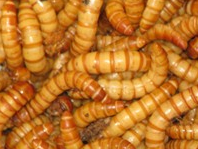To feed the growing world population, new sustainable protein sources have to be explored. Insects such as mealworm are promising candidates. The larvae of the mealworm beetle (Tenebrio molitor) are already for sale in the UK, USA, The Netherlands, and Belgium. However, a thorough safety assessment, and in particular an allergenicity risk assessment, is missing.
Allergenicity can be influenced, for example, by processing. It changes the protein structure and thus the IgE-binding epitopes. An epitopes is the part of an antigen that is recognized by the immune system. Mealworm is closely related to shellfish, so processing may alter the allergenicity of mealworm proteins in a comparable manner to shellfish.
Henrike Broekman, University Medical Centre Utrecht (UMCU), The Netherlands, and colleagues heat processed fresh mealworm, extracted it by a sequential extraction method, and tested the extracts using immunoblot, basophil activation test, and skin prick test in 15 shrimp allergic patients. A broader panel of mealworm proteins than usually could be studied, as ex vivo and in vitro tests were combined with a sequential extraction method and LC–MS analysis.
The researchers found that the protein profiles significantly changed after heat processing. Heat processing did not lower the allergenicity of mealworm proteins, but it clearly changed the solubility of these proteins.
- Effect of thermal processing on mealworm allergenicity,
Henrike Broekman, Andre´ Knulst, Stans den Hartog Jager, Francesca Monteleone, Marco Gaspari, Govardus de Jong, Geert Houben, Kitty Verhoeckx,
Mol. Nutr. Food Res. 2015.
DOI: 10.1002/mnfr.201500138




